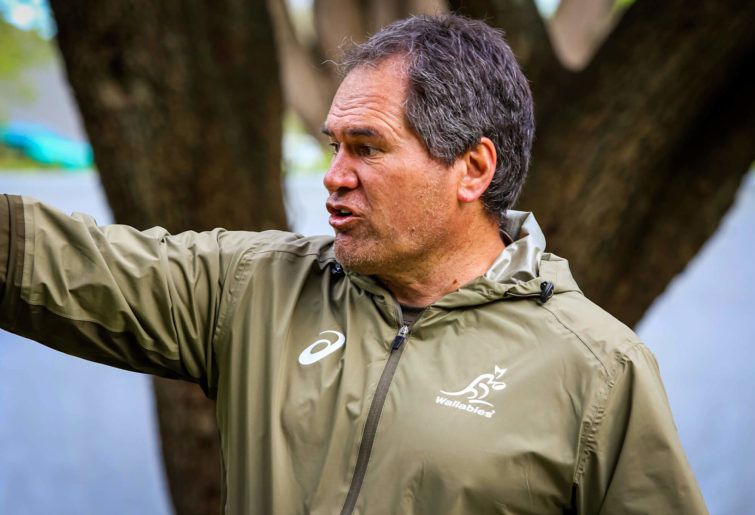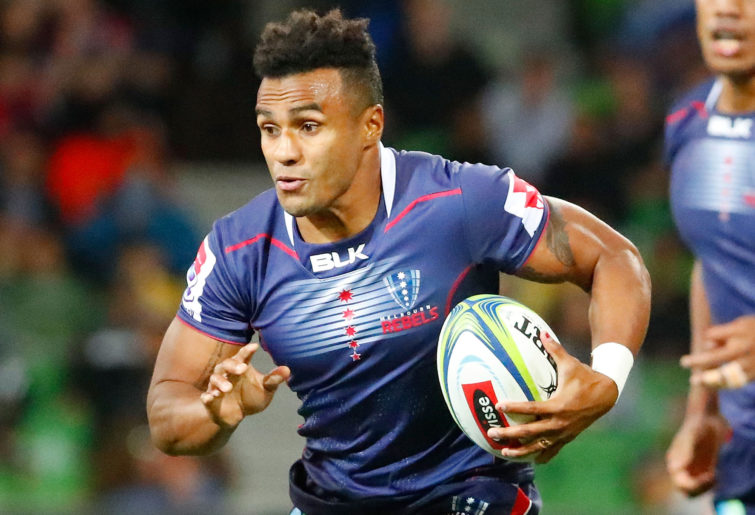In ten days the 2021 international season kicks off in Brisbane when Australia takes on France in a fixture rescheduled to Suncorp Stadium.
After a frustrating first season under new coach Dave Rennie, where the Wallabies won only one of their six Tests while drawing three, one lightning rod for fans was the Wallabies’ on-field decision making, particularly around kicking for goal or the touchline from penalties in the attacking half.
Over the next two weeks, the regular Monday wrap will take a rest, while, in concert with ex-Sydney University and Oxford University captain and Aussie 7s rep, David Kelaher, now based in France, we attempt to delve deeper into the area of rugby captaincy, and try to determine if the Wallabies in particular have room for improvement.
Since turning professional in 1995, rugby has made enormous advances in areas such as specialized coaching, skills development, mental aspects, the strength, conditioning and nutrition of players, recovery from injury and so on.
Some of this is the natural evolution of a game that is no longer a hobby or pastime, but a full-time proposition, complete with huge paydays for elite performers. And some of it is due to the rugby world becoming smaller, with sharing of ideas and best-practices commonplace across the globe.
With respect to captaincy, however, it is not clear that there has been the level of attention to structure, understanding or specific research that might lead to a formal understanding of the role, and better outcomes for rugby captains and the sides they lead.
Invariably, captains are chosen because they are deemed to have the right leadership qualities, and/or play in the right position, after which they are thrown into a sink or swim situation, where they are invariably judged on outcomes influenced mostly by factors outside of their control.
In their 2016 paper ‘The Experience of Captaincy in Professional Sport: The Case of Elite Professional Rugby’, authors Stewart Cotterill and Richard Cheetham from the University of Winchester, interviewed eight English Premiership captains, three of whom had captained their country in Test matches.
They concluded that “there appears to be a lack of structured support in terms of the selection, transition, and continued support provided to captains at this level. This, coupled with a lack of clarity regarding the role and the skills required to fulfill this role support the notion that the captain is not being effectively supported to be the athlete leader that the team requires.”
Clarity around the role is a recurring theme. So, what are the tasks the captain is expected to perform?
Participants in the Cotterill and Cheetham study identified player management, relationship building, tactical understanding, conflict resolution, communication and confidence enhancing.
A follow-up study in 2019 switched things around, looking at the same issue from the point of view of the professional rugby coach. Their conclusion was the same; “a deeper insight into the role and function of the captain has remained elusive.”
The coaches determined key aspects of captaincy to be fostering enjoyment, acting as a voice of the players, feedback on training, being a role model for the club, off-field duties such as attending functions and media duties, to espouse culture and values, man management, having a good knowledge of the game and being able to use that knowledge to underpin decision making on the pitch, and leading by example.

(Andrew Phan/supplied by Rugby Australia)
2003 World Cup-winning coach Sir Clive Woodward, listed five criteria for choosing his captain in his autobiography Winning: they had to be the best player in the team in their position, they must think correctly under pressure, they must be highly respected by their teammates, they must be at one with the coach and they must have proven themselves effective in other leadership roles.
These criteria are insightful for any existing or aspiring captain, particularly “think correctly under pressure” and “must be at one with the coach”. An interpretation of the latter is that the captain is able to openly discuss all matters relevant to the team, including the game plan, with the coach. This should also mean that the captain and the coach are aligned on the game plan and its tactical execution in the match.
Logically, “think correctly under pressure” should include making decisions that are aligned with the game plan and tactics. Therefore, a clear KPI for a captain is to what extent they have been able to lead the team’s execution of the agreed plan.
This can be measured quantitatively in terms of the percentage of decisions that align with the tactical plan and qualitatively via feedback from the players on the captain’s messaging and direction during a match.
Note, however, Woodard’s weighting to off-field responsibilities, and the pressures that come with that. Australian cricket captain Steve Waugh provided a flavour in his autobiography, stating, “the real challenge of captaincy wouldn’t come until later, when an unconventional move mightn’t come off and then would be picked to pieces by the fans, media, players – everyone.”
Another factor is the limited extent that a captain, through tactical acumen, is able to influence outcomes once a match is underway.
Rugby falls somewhere in between Australian Rules Football, where there are 18 players per side, and play is fast moving and mostly continuous, and cricket, where captains have long held sway over coaches, and determine strategic matters such as the batting order, bowling changes, fielding positions and umpire challenges.
In rugby, captains make decisions in the run of play, such as deciding whether to kick for touch or goal, but these are comparatively few compared to the strategy determined by the coaching team, or even decisions made in the match by the teams’ playmakers.
For example, Adam Coleman captained the Rebels in 2018 and 2019, however, it was vastly experienced halfback Will Genia who called the shots on-field with respect to option-taking from penalties and in the run of play.

(Photo by Scott Barbour/Getty Images)
Thus, it is no surprise that, when it comes to captaincy, there is less consideration given to tactical ability and an overwhelming emphasis placed on leadership in a more general sense. When Richie McCaw says Martin Johnson is a great captain, what he is really saying is that Johnson is a great leader.
Successful leadership can encompass a range of styles and methods; from ‘follow me over the trenches’ through what McCaw described as Johnson’s body language and presence, to the approach adopted by Waugh; “empowerment by infusing self-belief was the mantra I wanted to create.”
In recent years, the idea of shared leadership has been highlighted as an important characteristic of successful teams. A number of the captains in Cotterill and Cheetham’s study identified the presence of a leadership group as a key factor underpinning their captaincy, and these groups are now commonplace in professional rugby.
Johnson was a talismanic leader who was also consistent and clear in his decision-making. But he also had a very strong and tactically erudite group of senior players around him, in Lawrence Dallaglio, Neil Back, Jonny Wilkinson, Richard Dawson, Will Greenwood and so on.
Whether formal or informal, the quality of the senior group appears to be helpful, if not analytically proven to be pivotal, to success. Think Nick Farr-Jones in 1991 with Michael Lynagh, Simon Poidevin and Rod McCall…and again in 1999 where John Eales was supported by Phil Kearns, George Gregan, Stephen Larkham, Tim Horan, Jason Little, Matt Burke and David Wilson.
The current Wallabies under Dave Rennie are striving to build the same type of core leadership team. At the 2019 World Cup there existed a group of senior players under captain Michael Hooper, but the group itself, and the roles of those players, were largely undefined.

(Photo by Fiona Goodall/Getty Images)
In an exclusive chat with The Roar, Rennie explained how the current Wallabies have established a formal leadership group of eight players and are placing an emphasis on developing their leadership skills.
Leaders are isolated and filmed during huddles and warm-ups, in the changing room at halftime and after tries are scored, for and against; effectively coaching leadership as a skill. Further, every Sunday, the leaders rotate through a coffee meeting with Rennie and Hooper, where they are expected to contribute to analysis of matches and training, and to help plan for the coming week.
Rennie says that the results have been enlightening, singling out the contributions of Alan Ala’alatoa, James Slipper, James O’Connor and Nic White for mention.
Aside from allowing the captain to share some of the workload, and to utilise the talents and knowledge of other senior players, the other reason for a leadership group is to provide a pathway to leadership – and for some, captaincy – for the next batch of players.
That’s an interesting and important concept given that in professional franchise rugby, continuity is an extremely important indicator of success, and the organisation will do everything it can to transition smoothly from coach to coach. That’s not always the case in international rugby, where there can sometimes be more dislocation from the tenure of one coach to the next, where a new coaching team with new methods is installed and things are rebuilt every few years.
Another way of looking at it is that the match itself accounts for only 80 minutes of each week. Teams are together for most of the rest of the week and spend a large proportion of the time preparing for the match in line with a game plan and set of tactics.

(Photo by Ian Hitchcock/Getty Images)
They are also recovering, travelling and meeting off-field obligations such as media, sponsor and social commitments. As general leadership demands take up such a large amount of a captain’s time, why should all leadership responsibilities, including those relating to tactics and decision-making, fall on one person’s shoulders?
For the watching public, most of the captain’s work takes place out of sight. For example, a young player regaining confidence and form after a difficult match the week before, might be the result of a judicious word from the captain over a coffee or an in-room movie, long after the coaching staff have retired to their rooms to attend to other duties.
But because people judge based on what they can see, it is the decisions made in the run of play, that capture the interest and make the headlines even if the captain has been chosen for broader, overall reasons.
None of this should imply that such leaders are tactically deficient. Rennie says of these types of leader, including his captains Craig Clarke, Sam Cane and Hooper, “typically those characters already have a deep and acute understanding of the game”.
Rennie sees the greater challenge in improving the game awareness of his wider squad, having the younger players in the squad learn more about tactics and accurate decision-making, so that the team, as a unit, is inherently more capable of winning games by keeping their foot on the throat of the opposition.
Next week, we will drill down into some of the metrics – including conversion rates from lineouts in the attacking 22 – to look at how the Wallabies under Rennie and Hooper approach these situations and how successful they have been.
It’s not giving the game away to say that it makes for very interesting reading.
































































































